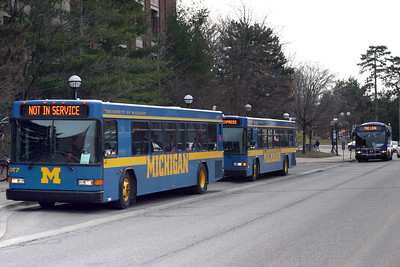Jefferson Community College in Watertown, NY, has a new president. Last week, Dr. Daniel Dupee II took over the school. His first order of business will be to figure out how to build enrollment, and his money is on occupational education. Between 2021 and 2022, enrollment there dropped by nearly 15%, as did the number of credit hours students there are taking.
According to Dupee, Jefferson Community College will add technical programs to attract new students.
“We’re good at liberal arts transfer. We need to make, you know, dip our toes into some applied programs and some workforce programs.”
That’s not a surprise. Community colleges that have focused on four-year transfer programs haven’t benefited from increases in enrollment the way schools with robust occupational education programs have.
No one denies that transfer programs are the easier route, but the numbers show that most students who start out with transfer intentions don’t realize that goal. Of those who do transfer to a four year university, only a slim few graduate.
Today, Jefferson Community College has a 29% graduation rate among students who started there as freshmen. The national midpoint is 32%. Over an eight-year period, 36% of 3,384 students transferred to another school; 29% graduated; and 34% dropped out. Among first year students, Jefferson Community College can expect just over half (53%) to return for a second year.
A four-year transfer program appeals primarily to “traditional” college-age students. When a school focuses on transfer programs, it voluntarily limits its enrollment to the traditional college-age demographic. That means the school’s fortunes rise and fall with that audience. When that demographic “shrinks,” so does the school’s enrollment.
Create more successful occupational education programs
Although a transfer focus is “easier” and less expensive, it also returns less. Occupational education programs will draw more non-traditional college students and will provide what they need in a shorter timeframe.
So, the notion of “dipping toes” into “a few” applied education programs is surprising. Occupational education programs should be second nature to community colleges. Balancing a small number of transfer programs against a larger number of occupational education programs is likely to be a much better approach – one that will keep classrooms full and more attractive to the broader student demographic that community colleges are supposed to serve.
Right now, only one out of every six community college transfer students successfully completes a bachelor’s degree. That’s a pretty small return. In the same way that schools like Oakland Community College need to shrink their physical footprints, community colleges need to shrink their transfer footprints.
Streamline the available transfer programs to provide a generalized transfer pathway for students who want to enter a BA program, another generalized transfer pathway for students who want to enter BS program, and then focus the rest of the school’s instructional efforts toward occupational education programs.
Recognizing that community college transfers have a low probability of succeeding is the first step in reversing the declining enrollment trends that have emerged over the last 15 years. Re-investing in occupational education is the second step, and one that is desperately needed.
Photo Credit: Kristin, via Flickr












